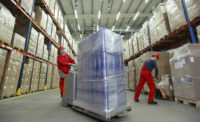The global market in organic food expanded between 2012 and 2016 at a compound annual growth rate (CAGR) of 10.9%, and is forecast to accelerate to a value of $187.6 billion by 2021, representing a CAGR of 13.8%, according to MarketLine, Rockville, Md.
The company’s latest report states that the United States will remain the largest single market, rising from $44.9 billion in 2016 to $63.4 billion by 2021 at a CAGR of 7.1%, underlining the country’s pivotal role in driving global growth.
“Although the U.S. currently accounts for over 45% of the global market, its share will fall to 34% by 2021 due to growth in the Asia-Pacific (APAC) region,” says Christopher Leyman-Nicholls, analyst. “Despite the continued healthy growth of the U.S. market, China’s rapidly expanding consumer society is propelling that of APAC to grow at a much faster pace.”
Demand for organic food is increasing globally as knowledge surrounding its environmental and health benefits improves.
“Growth in the United States is expected to slow because it is the most mature market globally,” adds Leyman-Nicholls. “Those such as China are expected to undergo rapid expansion, reducing the U.S.’s influence on the global market during the forecast period. Consumer confidence in organic food has continued to improve around the world, especially in European markets where regulation has clarified what constitutes organic food. Not only have production and processing rules been updated, but also control and labelling. Despite increasing global concern about where food is sourced, this has historically been centered around Europe and the U.S. However, thanks to rising wages, higher standards of living and a burgeoning middle class, more people are able to afford organic food in China. The Chinese market has been helped by greater awareness of malpractice in food production, creating a pull factor toward organic food.”

